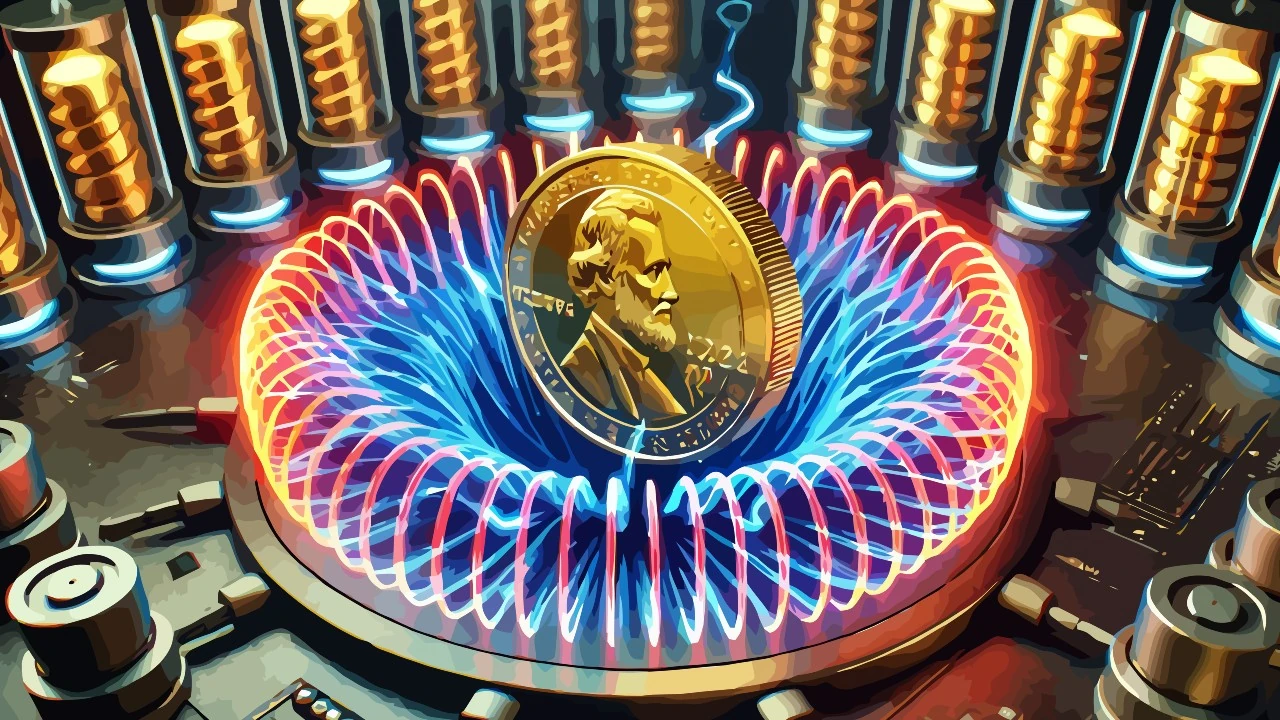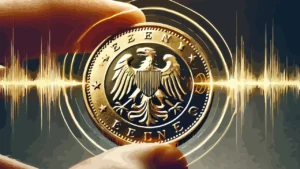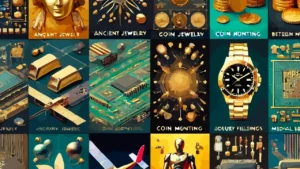When a magnet slides on a conductive surface, such as copper or silver, it is slowed down by the interaction with eddy currents generated by Lenz’s Law. However, if the surface is made of non-pure gold, i.e. a gold alloy, the phenomenon does not occur with the same intensity.
In this article we analyze the behavior of induced currents in alloys and their effect on the motion of a magnet.
Contents
#1. The principle of eddy currents
When a magnet moves over a conductive material, it generates induced electric currents within the material itself. These currents, called eddy currents or Foucault currents , are formed due to the variation of the magnetic field in time and space. According to the laws of electromagnetism, these currents in turn create a magnetic field that opposes the variation of the original field, generating a braking force on the moving magnet.
Eddy currents are responsible for slowing down the magnet on materials such as gold, copper, aluminum and silver. The effectiveness of the braking depends on the electrical conductivity of the material and its ability to support such currents without significant energy loss. In addition, the atomic arrangement of the material plays a crucial role: a material with an ordered structure allows a more uniform flow of electrons, favoring the formation of stronger eddy currents and therefore a greater braking force.
In highly conductive materials, the induced currents are distributed uniformly and can effectively counteract the motion of the magnet. However, in the presence of impurities or a disordered structure, the electrons encounter obstacles that reduce the efficiency of the formation of these currents, decreasing the slowing force exerted on the magnet.
#2. Interaction with conductors
Lenz’s Law , which derives from Maxwell’s equations, states that the direction of induced currents is always such that it opposes the cause that generated them. In the case of a magnet moving over a conductive surface, this means that the eddy currents generate a magnetic field opposite to that of the moving magnet, creating a braking force that slows its motion.
However, not all conductors offer the same resistance to the passage of such currents. Electrical conductivity, the crystalline structure of the metal and the presence of impurities influence the intensity of the induced currents. The purer and more free of discontinuities a material is, the greater its ability to generate strong eddy currents and, consequently, a greater braking force. This is why pure copper, silver and gold are among the best conductors of such phenomena.
The frequency of the induced magnetic field also plays an essential role. A material with high conductivity can support eddy currents of greater intensity, which in turn generate a stronger magnetic field, strengthening the braking force. If the conductor has a higher electrical resistance due to impurities or a heterogeneous composition, the eddy currents are dispersed and the braking phenomenon is attenuated.
#3. Gold and magnetic behavior
Pure gold (24K) is one of the best electrical conductors, with very low resistivity. If a magnet were to slide across a surface of pure gold, strong eddy currents would be generated that could slow it down significantly, as happens with copper and silver.
Gold, being a noble metal, does not oxidize easily, maintaining its conductivity constant over time. This makes it an ideal material for applications that require high electrical stability. However, its high malleability limits its use in pure form for mechanical or structural applications.
Another important aspect is the low internal resistance of pure gold. This means that eddy currents can flow without significant obstacles, generating a strong secondary magnetic field that opposes the movement of the magnet and causes it to slow down.
However, if gold is mixed with other metals to form an alloy, its electrical properties change dramatically. The impurities introduced alter the structure of the crystal lattice, reducing the mobility of the electrons and increasing the overall electrical resistance. This leads to a lower efficiency in the generation of eddy currents, thus reducing the braking effect that would occur with pure gold.
#4. Alloys and the reduction of braking
An interesting case involves the gold-copper alloy. Both metals, taken individually, are excellent electrical conductors and allow the formation of strong eddy currents. However, when they are combined to form an alloy, the overall electrical conductivity decreases, affecting the effectiveness of the eddy currents.
The main reason is the inhomogeneity of the crystalline structure. The atoms of copper and gold have slightly different sizes and, when mixed, create a less ordered matrix than pure metals. This discontinuity causes a greater scattering of free electrons, reducing the formation of strong and continuous eddy currents.
Furthermore, alloys do not have the same electron mobility as pure metals. Pure gold allows electrons to flow freely, which leads to strong eddy currents and thus a greater braking force on the magnet. However, in gold-copper alloys, the electrons’ path is interrupted by internal structural changes, reducing the overall effect of the induced magnetic field.
This explains why a magnet does not slow down significantly when it slides over a gold alloy, even if it contains a high percentage of copper. The more metals with different electrical characteristics the alloy is composed of, the more the electrons will be scattered and the less the material will be able to generate strong eddy currents.











Leave a Reply